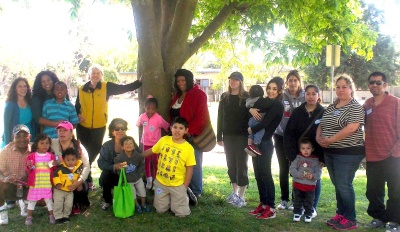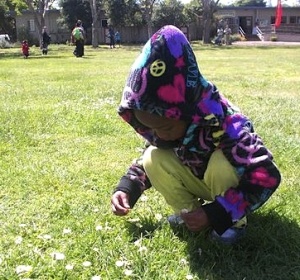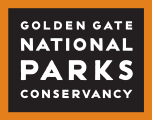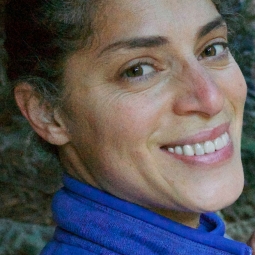Healing by Being Together in Nature
Publication Date
Image

Story/Content
 Magical
Magical
UCSF Benioff Children’s Hospital Oakland (CHO) Primary Care Clinic has partnered with the East Bay Regional Park District (EBRPD) to bring families to nature for health. The result has been, in a word, magical. Through the generosity of the Regional Parks Foundation, a Nature Shuttle takes patients, their families, and accompanying clinic staff to a variety of East Bay Regional Parks on the first Saturday of each month. The first two trips have been to Healthy Parks Healthy People programming at Crab Cove Visitor Center at Crown Memorial State Beach on the Alameda Shoreline where we were greeted by a naturalist, participated in guided activities exploring the outdoors, and have enjoyed a meal together.
Nature prescriptions
One family was recruited to the Nature Shuttle during a busy clinic morning when a single mother and two toddlers had come in for vaccines and asthma. During the course of the visit, the doctor learned that the family was struggling with housing. Among other more urgent topics, the provider was able to suggest this specific nature activity as a way to relax and recuperate. Once at the tide pools, with her boots covered in mud, this mother said: “This is my last pair of shoes.” She laughed and said that she had to wait until next month to have enough funds to buy a replacement pair, but that it was worth it.
We are a Federally Qualified Health Center, so a large portion of our patients live below the poverty line. Many lack basic resources such as food, house stability, transportation and child care. Poverty has profound effects on health. Over the course of life, the increased health risks associated with poverty have a cumulative impact of 14 years of difference in life expectancy. It also happens that people with the lowest resources, highest health needs, are often those with the least access to nature.
We look to nature to help our patients become resilient. We believe nature has the potential to heal because it buffers stress. When people have trees and vegetation around them, they have lower blood pressure, better emotional control, and improved attention and cognition. In larger population studies, green environments reduce stress, anxiety, depression, and increase the sense of well-being and longevity. Children living in more green environments have been shown to have more resilience against stressful life events such as family strife, divorce, and bullying. Associations with improved mental health and access to nature are even more profound for people living in poverty.
We also look to nature to help families spend quality time with each other. The best conditions to reduce childhood stress are those where young people can feel safe and connected to others and to the world around them; spending time with a loving adults builds resilience in children. Opportunities for quality time increase when families are outdoors. We have observed many distraction-free moments of quiet, tenderness, and laughter between parents, grandparents, and siblings in nature.
We refer patients to the nature shuttle to increase physical activity, but also to help with stress relief and social isolation.
 I want to stay here forever
I want to stay here forever
“I want to stay here forever,” said an 11-year-old girl at the end of one of our trips. Her exclamation surprised us as she had been completely silent through out the excursion. For the most part, she helped her parents care for three younger siblings, quietly accompanying them around the tide pools, pond and the Crab Cove Visitor Center. She maintained a vigorous grasp on an adult’s hand as we followed a naturalist out into the muddy tide pools to search for crabs, worms and bat rays. Her sequined pink sneakers were covered in mud, and after a few minutes she turned around and quietly went back to the shore.
Partnering with children such as this young girl and families to get outdoors has taught us not to make assumptions about how children feel about or experience nature. One young boy jumped into the dirt almost head first, elated, running back and forth to the group to announce his latest discovery such as Mermaid’s Hair Seaweed. One family group spanned three generations, including a teenager wearing headphones. Despite this teen’s cool demeanor, she was just as engaged as her elders when we saw baby ducks. Another boy separated from the group; staying on shore. When we returned from the tide pools we discovered that he had been completely engrossed in finding crabs of different sizes. Filled with pride, he held up his hand which was filled with several little crabs. The toddlers in the group often struggle to sit still, but come to life when allowed simply to run.
Fun looks different depending on a child’s developmental stage. Young children ages zero to five learn, explore, engage and get active through play. Play is best when spontaneous and self directed. Natural environments that are enriched – that is, with natural elements such as sticks, rocks, and streams – foster healthy development and invite young children to explore while gaining physical skills and coordination. With the little ones, we are often reassuring and encourage parents to find a safe outdoor space and to give their preschooler unstructured time to discover and play. Elementary aged children, on the other hand, enjoy being outside with their parents or friends. To engage an adolescent, it is important to listen to her ideas on where to go and what to do in the outdoors.
Getting kids to nature is not always easy on the adults
The parents on our trips work hard to give their children this opportunity. A half-day excursion into the outdoors takes time, access to nature, and money for supplies, meals, transportation, and childcare. For many people these are formidable challenges. The shuttle leaves from our clinic on the first Saturday of each month. Getting to our clinic poses it’s own challenges: one couple with four children had taken three buses to get there and were running to get to our clinic, as one of their buses was delayed. One grandmother had hailed a taxi when her connecting bus failed to show up. Another mother arrived early so her children could take a nap and catch up on sleep before the trip. Another family of four children had spent two hours on a bus to get to our shuttle. We are humbled by our families’ determination to explore with us.
But, as is the magic of nature, the barriers between families fall when we are outdoors. Families and staff help each other out. On the bus ride over, several of the mothers traded information on housing options. A naturalist held one mother’s toddler for much of the day so she could tend to another child. The formalities between doctor and patients also drop; one doctor ran and ran with a two year old across a grassy lawn until they both sat down, smiling, and finally tired. The physicians had the opportunity to talk with families in a way that they would never have the opportunity to do otherwise. As social isolation is a true public health issue, the potential for community building in these trips is profound.
When we say nature, we mean community
What is it exactly about being outdoors that heals us and heals children? Science tells us the health benefits of nature include physical activity, stress relief, and social contact. Our experience tells us nature is about having fun with friends, family, and community. Being in nature is also about expanding our definition of community. For a child, attaching to the place where they live, and to the plants and animals that share this space with them also has the potential to help them feel connected. Reducing stress and being connected to loving adult and community helps kids become resilient.
Parks remain an invaluable resource for free and local opportunities to experience nature. Thank you, East Bay Regional Park District for being an amazing collaborator and for caring for our parks. Thank you to UCSF Benioff Children’s Hospital for believing in nature. Thank you to parents and caregivers for exploring. Thank you to all the naturalists, environmental educators, and guardians of our nation’s natural resources. You are public health in action.
We would like to recognize Carol Johnson, Elizabeth Carmody, Sharon Nelson-Embry, Yogi Francis, Pat Chase, Kelley Meade, Christine Schudel, Kelvin Dunn, Curtis Chan, and Kristin Wheeler for helping to create this vision.
About the Authors
Dr. Dayna Long is a staff pediatrician at UCSF Benioff Children's Hospital Oakland (CHO) where she co-directs the Family Information and Navigation Desk (FIND). She has been a dedicated Nature Champion at CHO and currently collaborates with EBRPD to integrate nature into clinical care in a program called FIND Nature! Dr. Long also serves as Medical Director for the Asthma Clinic where she and her team run an annual camp for children with asthma to spend a week in nature called "Camp Breath Easy."
Dr. Nooshin Razani is a pediatrician practicing at the Silva Clinic in Hayward and UCSF Benioff CHO. She was trained as a "Nature Champion" by the National Environmental Education Foundation in 2010 and serves as the lead medical Senior Fellow to the Institute at the Golden Gate. She is thrilled at this opportunity to share her love for nature with families through a collaboration with the FIND Nature! team at Children's Hospital Oakland and EBRPD.
Photos by Nooshin Razani and Elizabeth Carmody


